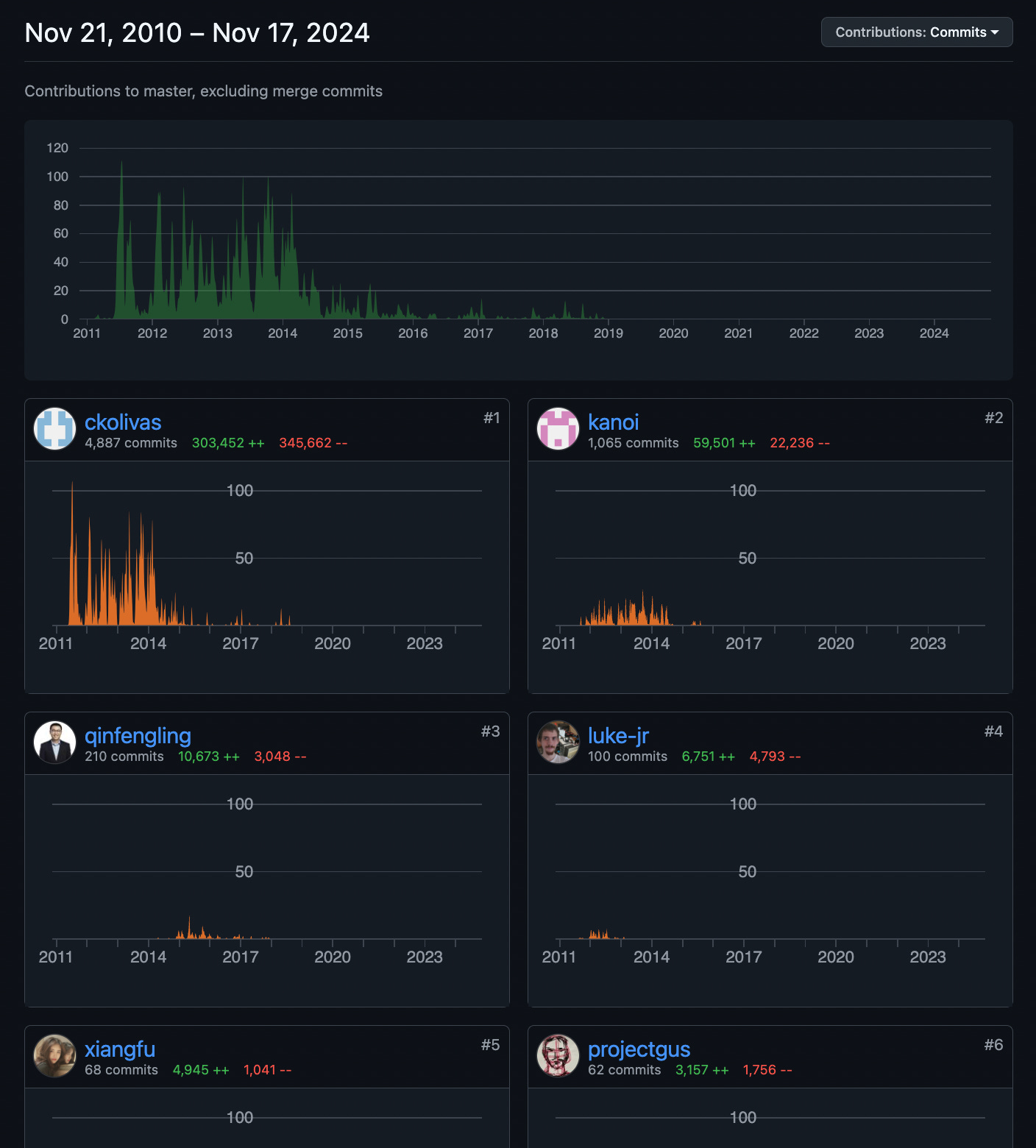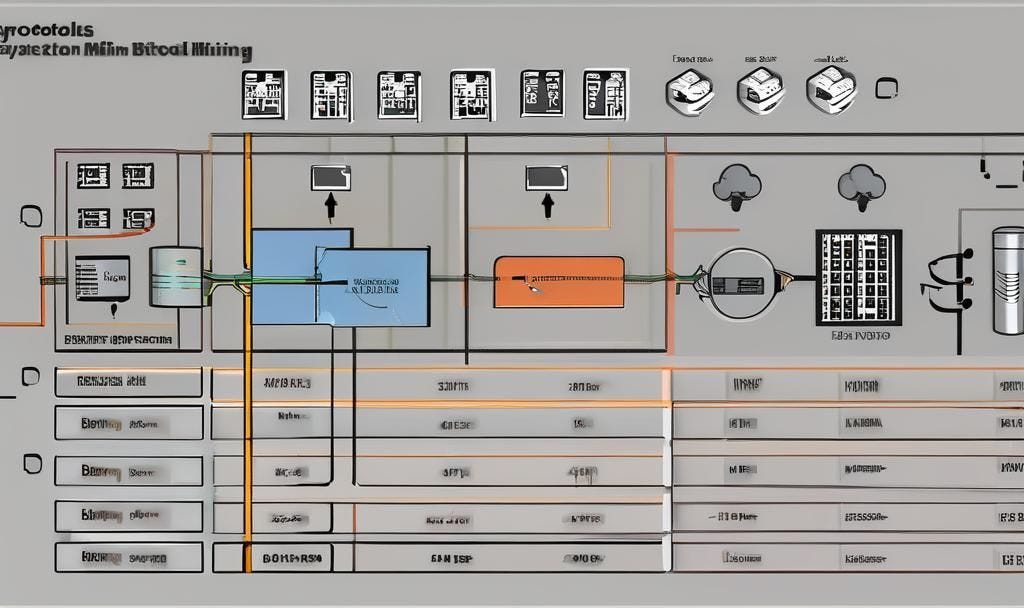Updated Nov 17, 2024 to address incorrect information about DATUM, to clarify the origin and development of CGMiner, and to clarify the closed/open source nature of some firmware.
Bitcoin mining software and firmware play critical roles in enabling miners to connect their hardware to the Bitcoin network, optimize performance, and ensure the integrity of the decentralized system. From early community-driven projects to modern proprietary solutions, the development of mining tools has been shaped by innovation, collaboration, and, at times, conflict. This paper delves into the history of mining software, the contributions of developers like Con Kolivas (CK), the challenges posed by proprietary firmware such as Bitmain’s BMMiner, and the ongoing innovations in protocols and programming.
Early Days: Open-Source Foundations and CGMiner
Bitcoin mining software began as open-source projects designed to empower a decentralized community of miners. CGMiner, created by Con Kolivas, Jeff Garzik, Kano and Luke Dashjr, emerged as one of the most influential mining tools. Released as open-source software, CGMiner allowed miners to configure and optimize their hardware for efficient operation. Its modular design and extensibility made it a cornerstone for Bitcoin mining during its formative years.
Kolivas added GPU mining to Garzik's “cpuminer”. Luke Dashjr helped take it into the fpga and ASIC era. It is worth mentioning that Luke has forked the code at one point as bfgminer.
CK’s commitment to open-source principles ensured that CGMiner was accessible, transparent, and adaptable. Developers could modify and improve the software to suit specific hardware or respond to changing network requirements. This openness fostered innovation and collaboration, helping Bitcoin mining evolve from its CPU-based origins to specialized ASIC hardware.
Bitmain and the Rise of Proprietary Firmware
As Bitcoin mining industrialized, companies like Bitmain became dominant players in the ASIC hardware market. Bitmain’s miners shipped with proprietary firmware, including BMMiner, which was based on CGMiner. However, Bitmain’s decision to modify CGMiner without adhering to its open-source licensing terms sparked significant controversy.
CK and other community members criticized Bitmain for failing to publish their changes to CGMiner’s code, as required under the GNU General Public License (GPL). By keeping their modifications proprietary, Bitmain gained a competitive advantage, limiting the ability of others to audit or build upon their firmware. This move not only violated the principles of open-source development but also raised concerns about centralization and lack of transparency in Bitcoin mining.
James Hilliard’s Copyright Claim Against Bitmain
One of the most notable responses to Bitmain’s actions came from James Hilliard, a mining firmware developer and contributor to the Bitcoin community. Hilliard filed a copyright infringement claim against Bitmain for their unauthorized use of CGMiner’s code in BMMiner. His claim successfully leveraged the terms of the GPL to hold Bitmain accountable for their violations.
The legal dispute had far-reaching consequences. Hilliard’s copyright claim led to a ban on Bitmain miners being sold on Amazon in the United States. Amazon’s policies prohibited products with unresolved intellectual property disputes, and Hilliard’s actions effectively prevented Bitmain’s ASIC devices from being listed on the platform. This highlighted the importance of respecting open-source licenses and underscored the potential legal risks for companies that fail to comply.
The Rise of New Firmware Innovations
In response to the limitations of proprietary firmware, independent developers have created alternative mining firmware that offers improved performance, transparency, and customization. One of the significant trends in recent years has been the use of modern programming languages like RUST to develop mining software and drivers.
Some developers in the bitcoin mining firmware space feel, thus far, that we really have not seen much positive come from the use of RUST just yet. There are crude jail-breaks like LuxOS, Braiins, Vnish, etc which are still mostly closed source.
RUST is known for its safety, speed, and concurrency, making it well-suited for the high-performance demands of Bitcoin mining. New firmware written in RUST has enabled miners to optimize ASIC hardware more effectively while maintaining stability and security. These advancements demonstrate the ongoing potential for innovation within the Bitcoin mining ecosystem, even as the industry becomes more competitive and specialized.
Prominent alternative firmware solutions include:
• Braiins OS: Originally an open-source mining firmware that emphasizes transparency and efficiency. Developed by the team behind Slush Pool, Braiins OS was a direct response to the closed nature of proprietary firmware.
• Vnish Firmware: Another popular alternative that offers overclocking capabilities and performance tuning, giving miners greater control over their hardware. However, these days, Vnish is closed source.
These projects at one time aided in some fashion to continuing the legacy of open-source contributions, empowering miners with tools that prioritize transparency, adaptability, and user autonomy.
Mining Protocols: Stratum and the Future of Decentralization
Mining protocols serve as the communication layer between miners and the Bitcoin network. The original Stratum protocol was designed to facilitate efficient communication between miners and mining pools. However, as the industry matured, the limitations of Stratum became apparent, particularly in its ability to support decentralization.
Stratum V2, the proposed upgrade to the protocol, aims to address these challenges. Key features of Stratum V2 include:
Job Negotiation: Stratum V2 allows miners to select their own block templates, reducing reliance on pool operators and enhancing decentralization.
Improved Security: The protocol includes encryption to protect data transmitted between miners and pools, reducing the risk of attacks or manipulation.
Efficiency: Stratum V2 is designed to minimize bandwidth usage and improve performance, making it more accessible to miners with limited resources.
While Stratum V2 represents a significant step forward, its adoption has been slow, partly due to the technical complexity of implementation. Critics, including CK, have expressed concerns about potential latency issues and the impact on smaller miners. These challenges highlight the ongoing tension between advancing protocol capabilities and maintaining inclusivity within the mining ecosystem.
DATUM is a new decentralized mining protocol developed by Ocean Pool, designed to work with Stratum V1 and thus usable today. Stratum V2 might allow for decentralized aspects of Bitcoin mining in the future with further development. It could potentially enable miners to control block templates and improve security through encrypted connections.
What if a protocol was developed that pushes decentralization further by creating a peer-to-peer structure that eliminates reliance on centralized mining pools? Matt Corallo states that at this time the only p2p mining software that exists is p2pool, and in the future, possibly Braidpool.
Stratum V2 still requires miners to connect through traditional mining pools. Though not implemented yet today, innovations like DATUM are designed as a stepping stone that could perhaps one day allow mining tasks to be distributed across a network of independent nodes, allowing miners to work directly with each other rather than through a centralized pool operator.
There are some mining pool and protocol developers who want to see mining operate without a single point of control in order to reduce centralization risks and enhances the autonomy of individual miners. Perhaps protocols in the future could achieve this by utilizing a unique network structure where miners directly communicate and share work without intermediaries. This could preserve the benefits of mining pools—such as sharing work and reducing variance—without consolidating power within centralized entities.
DATUM provides the first realistic and lightweight tool for solo mining with previous solutions all presenting a great technical challenge and not offering the option of connecting to an upstream-pool for reward splits as DATUM does.
Approaches like this represent a significant shift that aim to fully decentralize mining operations in the future and align more closely with Bitcoin’s foundational ethos. The technology behind DATUM can be spun up in the future by other pool developers or solo miners and offers a possible alternative path for those within the Bitcoin mining community who are looking to further mitigate centralization and protect the network’s independence from any single controlling entity.
Challenges and Opportunities Ahead
As Bitcoin mining continues to evolve, several challenges and opportunities will shape its future:
Challenges
Centralization of Mining Power: The dominance of a few hardware manufacturers and mining pools poses risks to Bitcoin’s decentralization and security.
Proprietary Firmware: Closed-source solutions limit transparency and innovation, creating barriers for independent developers and miners.
Adoption of Advanced Protocols: The technical demands of implementing protocols like Stratum V2 may exclude smaller participants, potentially reinforcing centralization.
Opportunities
Open-Source Innovation: Projects like CGMiner, the original Braiins OS (not the Braiins OS+ version) and DATUM demonstrate the power of open-source contributions in driving progress and maintaining decentralization.
Modern Programming Practices: The use of languages like RUST have the potential to open new possibilities for mining firmware that is secure, efficient, and customizable.
Legal Advocacy: Actions like James Hilliard’s copyright claim highlight the importance of enforcing open-source licenses and protecting the rights of developers.
Watch the podcast interview with CK here.
Conclusion: The Path Forward for Bitcoin Mining Software and Firmware
The history of Bitcoin mining software and firmware is a testament to the power of collaboration and innovation. From the open-source roots of CGMiner to the modern developments in RUST-based firmware, the community has continually adapted to meet the challenges of an evolving industry. However, the rise of proprietary solutions and the centralization of mining power remain pressing concerns.
By prioritizing transparency, respecting open-source principles, and supporting decentralized protocols, the Bitcoin mining community can continue to uphold the values that underpin the network. The actions of developers like Con Kolivas and James Hilliard serve as reminders that innovation and advocacy are essential to ensuring that Bitcoin remains a robust and equitable system for all participants.




